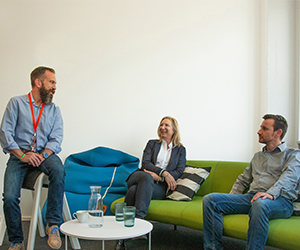Once done, the basic system declaration is more or less complete. Nevertheless, a system developer still has to implement the required component logic with the help of the C programming language. Finally, CAmkES is able to generate a complete, platform-specific bootable system image.
CAmkES and TRENTOS® – providing the framework for a secure OS
With TRENTOS, HENSOLDT Cyber takes the next logical step – developing a novel secure embedded OS on top of the proven seL4 ecosystem. It alleviates the entry to the quite complex area of developing secure embedded systems by abstraction. Hereby, developers can fully focus on creating secure applications without having to worry about lower-level details and the underlying architecture.
CAmkES hereby provides the framework on top of seL4, which is used by TRENTOS to build the respective OS components and services (e.g. for storage or networking support).
Within TRENTOS, the application of CAmkES allows for a certain degree of flexibility. For supporting strong isolation, functionality can be provided separately in form of different CAmkES components that may be explicitly allowed to communicate with each other. In case specified performance requirements have to be satisfied, functionality may also be bundled within a library that is executed in just a single CAmkES component, therefore avoiding any communication overhead. Hence, the design of a TRENTOS system strongly depends on the given requirements. So, stay tuned for the upcoming blog posts, which will provide more insights on the TRENTOS architecture as well as the content of the respective SDK. If you are interested in more details regarding CAmkES itself, have a look at the CAmkES manual [3].
